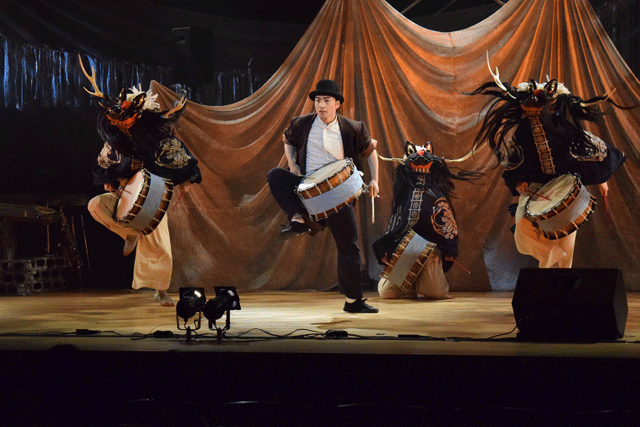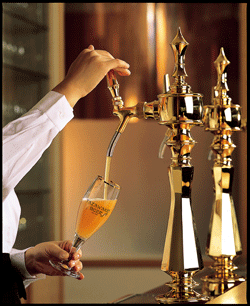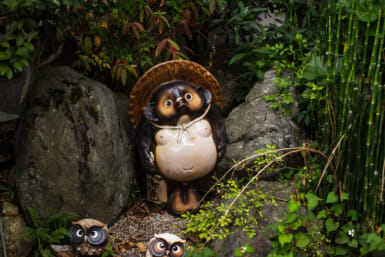The Warabi-za theatrical troupe breathes dramatic life into the ancient world of Japanese folklore.
One of the best known theatrical companies in Japan, Warabi-za is also one of its most hardworking: made up of seven different groups, the organization gives a total of 1200 performances each year throughout Japan, including 250 shows a year for more than 60 years at its home in Senboku, Akita Prefecture. Founded in 1951, Warabi-za is recognized as one of Japan’s top companies, alongside the Shiki Theatre Company and the Takarazuka Revue, and routinely gives performances overseas—in the U.S., South America, Asia and throughout Europe.
While Warabi-za occasionally performs works by foreign playwrights, it is best known for its unique revivals of Japanese folk traditions—particularly the stories, songs, and dances of the people of Tohoku. These ancient rhythms and melodies have their origins in the work that people throughout Japan have been doing for centuries.
Whether it was in the fields of grain or the paddies, by the ocean or in the mountains, the work that people did came with a cadence. As villagers worked together to this rhythm, they would coordinate their movements, calling out in unison to give each other strength and encouragement and to reinforce the bonds of teamwork during labor that was often hard, dangerous and exhausting.
And when these labors came to an end, the people would celebrate with ceremonies that were meant, in part, to ask the gods for good growing conditions and a healthy crop, but also to bring those communities together, reaffirming their deep ties to one another as a new season’s challenges and rewards approached.
These are the experiences and emotions that Warabi-za performances are meant to evoke, and in addition to the performances that guests can see at the Warabi-za home theater, they can immerse themselves in an environment that truly brings these traditions to life: the Tazawako Art Village.
The Art Village was built 20 years ago, inspired by the idea that visitors would be able to share in a communal atmosphere like the ones that gave birth to the traditions that the troupe brings to dramatic life. It’s an ambience that blends art commune and resort: it is a place where theater, music, and dance are cultivated, thanks to invigorating and inclusive workshops where professional actors teach participants how to play the taiko—Japanese drums—and how to perform the region’s traditional dances. And yet, it is a location where visitors can savor the creature comforts of the region: Akita’s hearty cuisine and its soothing hot springs.
When Warabi-za was founded, it was with the idea that it would help members of Japanese society learn to appreciate their nation’s many traditions. Now, as more foreign visitors come to visit, it is a place where the whole world can experience traditional forms of folk performance that celebrate community ties across borders and across generations.
The Pleasures of the Passing Seasons
The area around the Art Village is famous for its blueberries, and during the summer months, guests can pick blueberries fresh off the bush. Koyo—the changing leaves of autumn—can be best seen at the nearby Daki-gaeri-keikoku. And in the winter, the area around Tazawako is transformed into a wonderland of snowy white.
But throughout the year, there is an attraction that guests keep returning for. Tazawako Beer is the first brew that went into production in Akita—in 1997— and its Alt variety has taken home a gold prize at the World Beer Awards for four years straight.
For more information please check the official website: www.warabi.jp/english/
Sponsored Post
Updated On September 21, 2017










